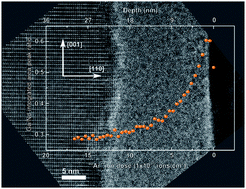Controlling the surface termination of NdGaO3 (110): the role of the gas atmosphere
Abstract
In this work the effect of gas atmosphere on the surface termination reconstruction of single crystal NdGaO3 (110) (NGO) during thermal annealing was analyzed. Using Low Energy Ion Scattering (LEIS) it has been possible to study the chemical composition of the first atomic layer of treated NGO single crystal samples. NGO has been analyzed both as-received and after a specific thermal treatment at 1000 °C under different gas fluxes (argon, nitrogen, static air, synthetic air, nitrogen plus 5% hydrogen and wet synthetic air respectively). Thermal annealing of perovskite single crystals, as already reported in the literature, is used to obtain a fully A-cation surface termination. Nevertheless the effect of the gas-atmosphere on this process has not been previously reported. By the use of sequential low energy Ar+ sputtering combined with the primary ion LEIS analysis, the reconstruction of the outermost atomic layers has allowed the clarification of the mechanism of NGO neodymium surface enrichment. It is proposed that the gallium at the surface is submitted to a reduction/evaporation mechanism caused by low oxygen partial pressure and/or high water pressure in the vector gas. Below the first surface atomic layers of an as-received NGO single-crystal a gallium-rich phase has also been observed.


 Please wait while we load your content...
Please wait while we load your content...